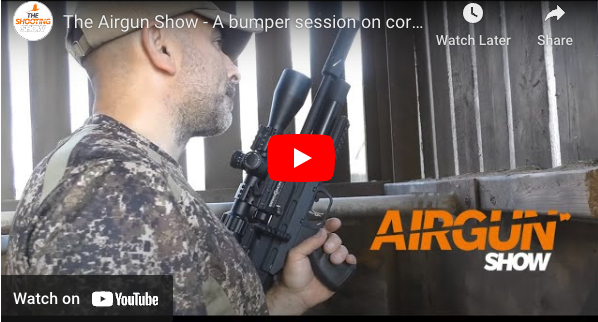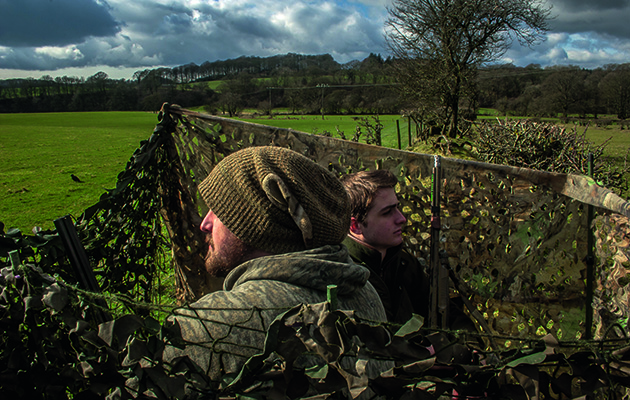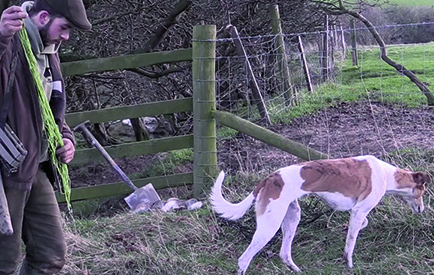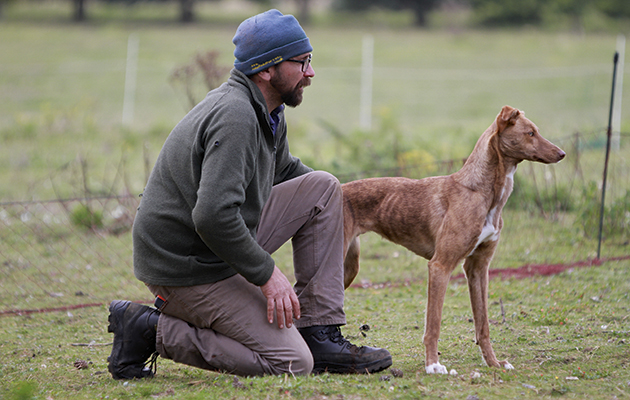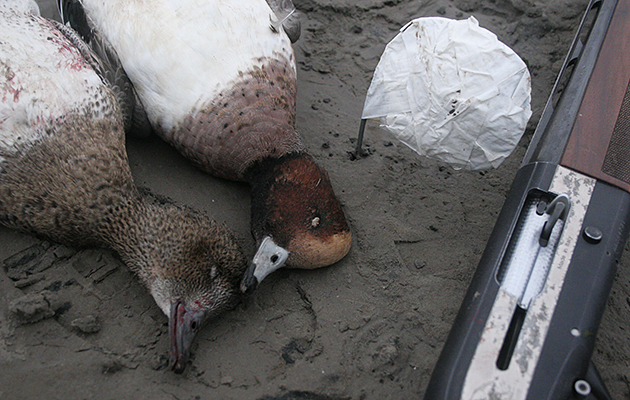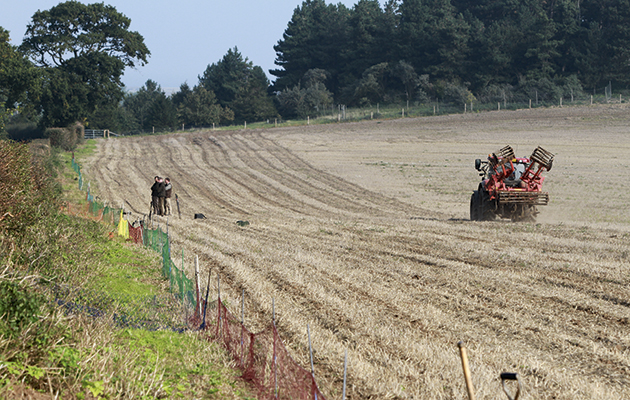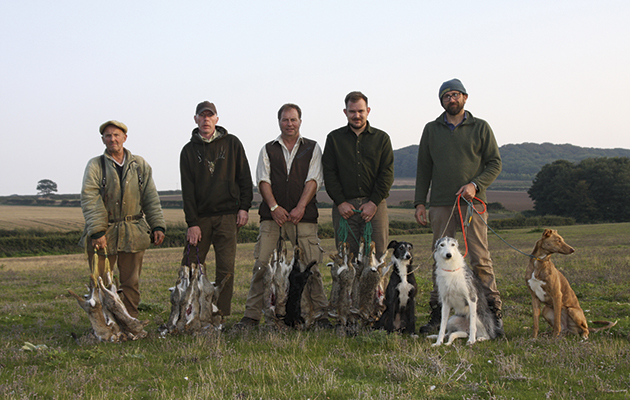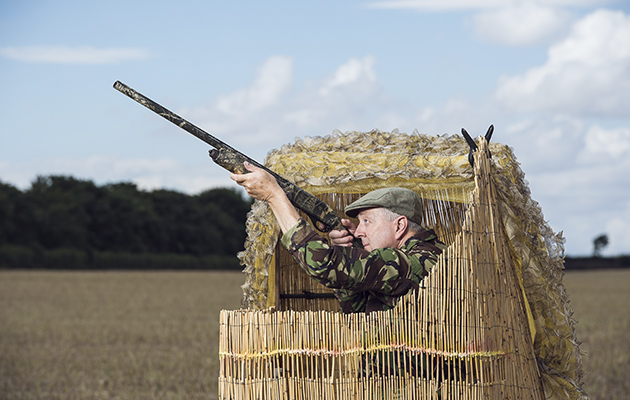How to use crow decoys for corvid control
The problem with decoys at the end of the season around these parts is finding somewhere to go. The crows haven’t been pressured into feeding anywhere in particular due to the mild wet winter.
Optimising chances
Picking a location to shoot was a difficult decision as the estate has a lot of crops to choose from, many of which are followed by large numbers of crows. I chose to improve my chances by setting up in one of the covercrops situated on top of a hill. The farm always has birds milling around it, so I hoped it would increase my chances of a shot if I could tempt some of those birds over, too.
This crop, however, has always been a pain, as though it often has birds flowing in and out, it is an awkward one to shoot. It’s a long rectangle-shaped crop on the brow of the hill, with hedges on three sides. On the other long side there is a sheep netting fence. The long hedge is too far down from the brow of the hill to get a good shooting position where the crow decoys are visible.
I decided to set up on the broken up hedge that overlooked the farm, using a simple net hide with a bit of natural vegetation as concealment. I placed some full-bodied decoys on the fence, as the crop is on top of the hill a lot of the crows fly below the skyline, silhouetting the crow decoys, and making them stand out really well.
Putting the plan into practice
I arrived at the crop mid-morning, as the drive was usually fed late morning.
I soon had the hide built and the crow decoys set up on the fence with a few on the feed ride in front of the hide. Once set up, I parked the Kubota out of sight and loaded the Remington 1100 Trap with trusty Victory Whites 35g 5s. These shells, teamed with the 30in full-choke barrel would prove to have an effective stopping power for any birds passing on the edge of range.
Crow decoys in place
As I organised my gear in the hide, the first crow caught my eye as it glided over the hedge from behind me. I grabbed the gun and to my amazement had a swing and a miss!
This wasn’t a very good start, but it is a common fault when shooting slow and easy targets: I thought it was dead before. I pulled the trigger. I had given it far too much lead with both shots as it was almost hovering in the wind.
With the first rookie mistake under my belt, the next chance came with a fast pigeon. This was more like the kind of shot I’d got accustomed to over the past few months while fowling. I lifted the gun, missed with the first shot as the bird spooked and started evasive flying manoeuvres, but the second shot pulled it down cleanly at a respectable range.
Now on the scorecard, I settled into a relaxing day with the odd shot. The action was far from thick and fast, but what a great day, with a range of different targets. The majority of the crows snuck in over the hedge making for some tricky catch-up shots – the birds spooked at my reaction
to grabbing the gun.
These types of shots were what the Trap gun was made for – as going-away birds they simply needed the bead to touch the bird and a squeeze of the trigger to result in nice clean kills. There were a few crows that played the game and decoyed nicely, but the most sporting birds had to be the pigeons with a tail wind making for some challenging shooting.

